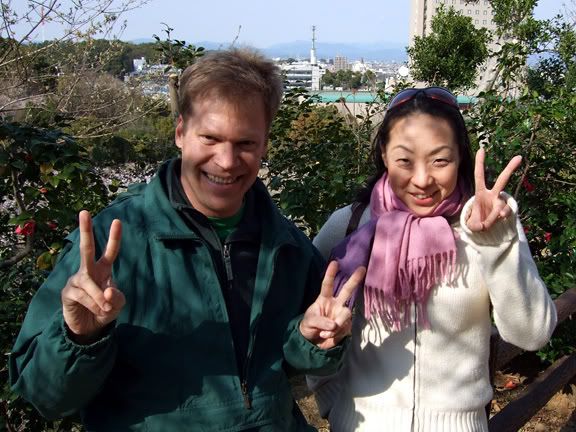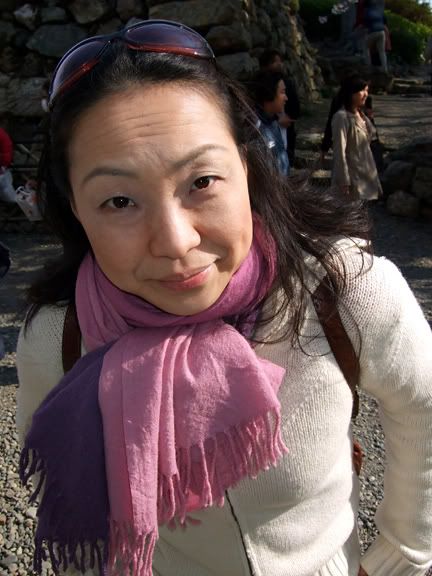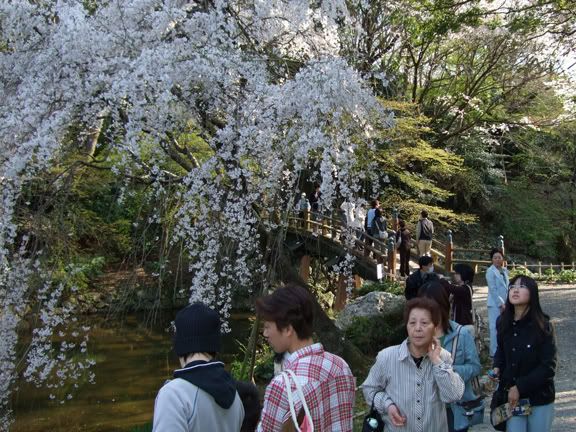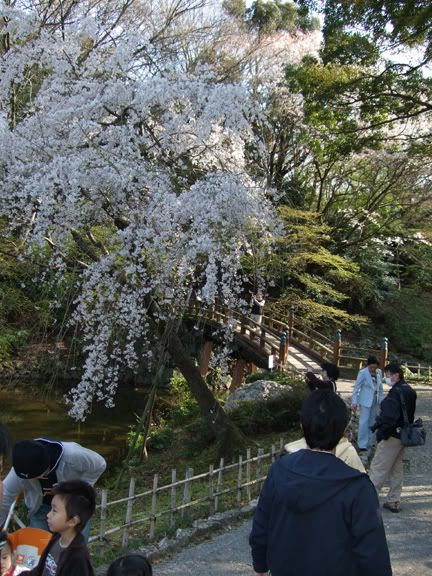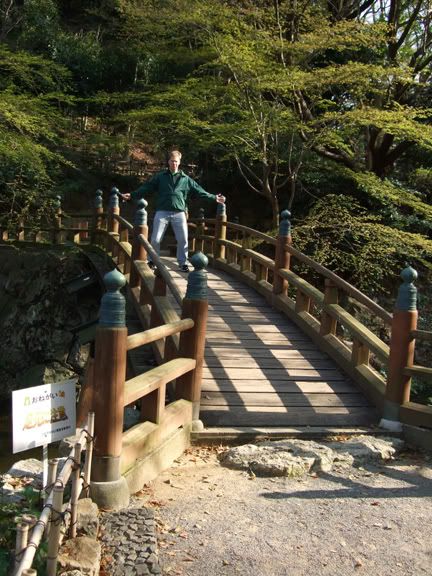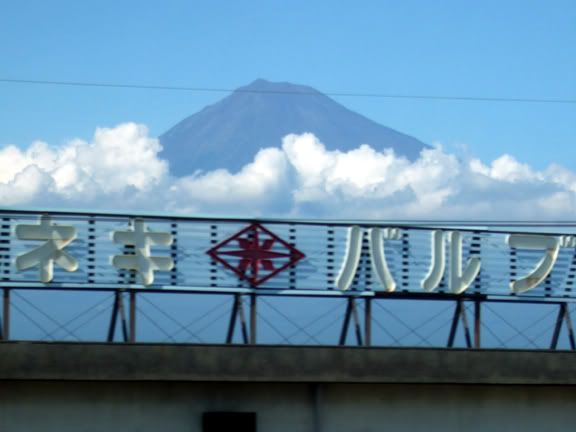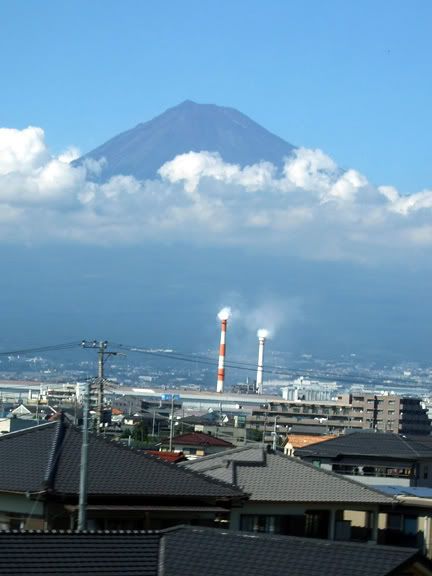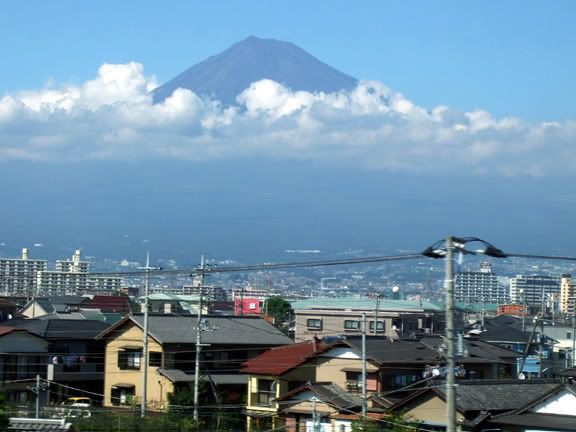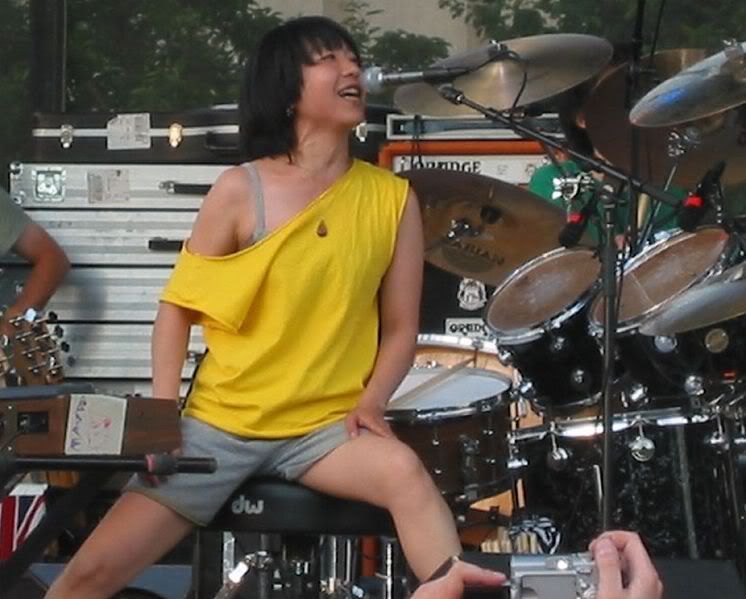First we had to find this:
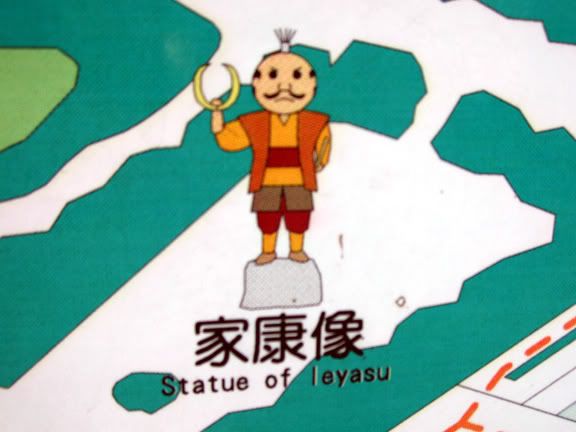 So into the park we went, up a sloping avenue lined with cherry trees:
So into the park we went, up a sloping avenue lined with cherry trees: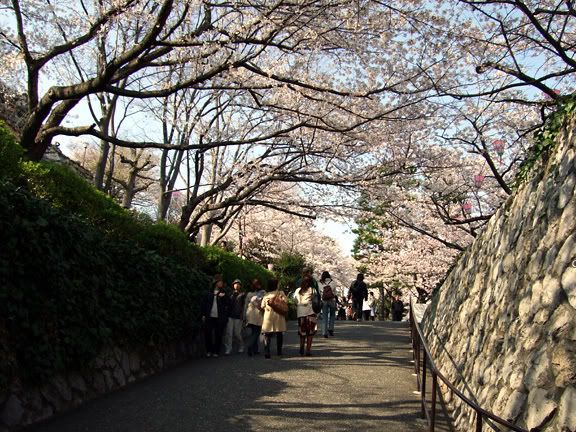 And there he was, Tokugawa Ieyasu. The third of the great unifiers of Japan, he put down all rivals and initiated the Edo Period, about 250 years where Ieyasu and his heirs ruled Japan as shoguns.
And there he was, Tokugawa Ieyasu. The third of the great unifiers of Japan, he put down all rivals and initiated the Edo Period, about 250 years where Ieyasu and his heirs ruled Japan as shoguns. Hamamatsu was one of Ieyasu's early castle towns. I think he murdered his first wife here, too. I can't remember the story (just that it was a political thing), but you can visit her grave and find out why and how.
Hamamatsu was one of Ieyasu's early castle towns. I think he murdered his first wife here, too. I can't remember the story (just that it was a political thing), but you can visit her grave and find out why and how.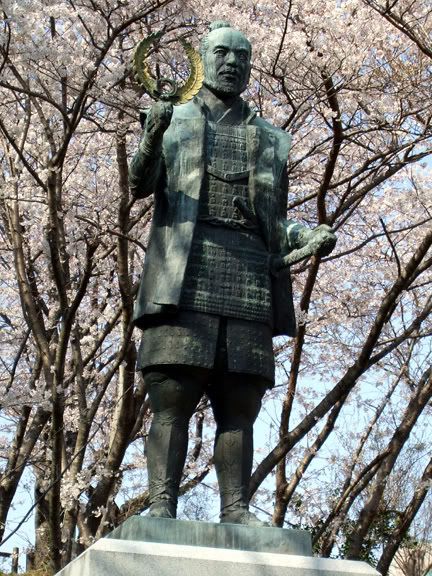 He's a towering figure in Japan due to his accomplishments and the way he shaped the culture, but he's not everyone's favorite. George Washington and Thomas Jefferson owned human beings, bought and sold them. Not that this makes murder okay, or that, conversely, murder makes slavery okay. Just something to keep in mind.
He's a towering figure in Japan due to his accomplishments and the way he shaped the culture, but he's not everyone's favorite. George Washington and Thomas Jefferson owned human beings, bought and sold them. Not that this makes murder okay, or that, conversely, murder makes slavery okay. Just something to keep in mind.What kind of person was he? What must he have thought about the things he did?
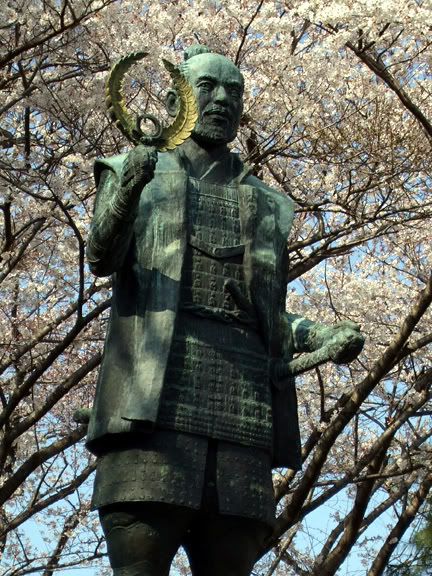 Fortunately, I was probably the only person thinking along those lines while staring at the statue. But we were out for fun, so even I didn't dwell on troubling thoughts for long. Here are my friends Mike and Kana:
Fortunately, I was probably the only person thinking along those lines while staring at the statue. But we were out for fun, so even I didn't dwell on troubling thoughts for long. Here are my friends Mike and Kana: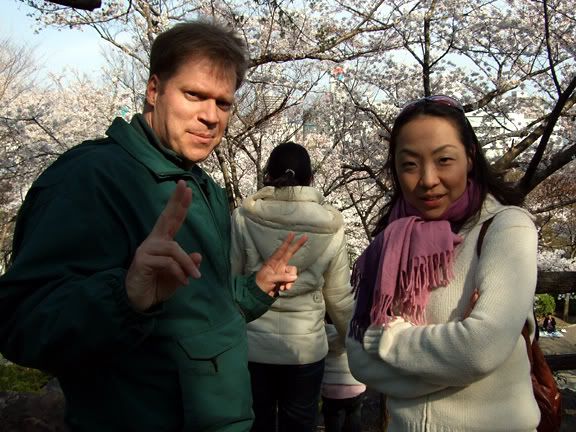 And here's just Kana. Isn't she photogenic? With her lavender and purple pastel scarves and white coat she looks a little like a sakura herself:
And here's just Kana. Isn't she photogenic? With her lavender and purple pastel scarves and white coat she looks a little like a sakura herself: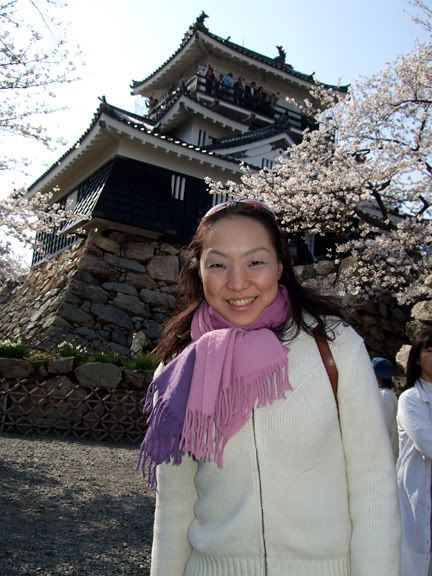 Here's this guy again. I don't know how he got into our photographs. He has a very large head, like a lion's. Like Aslan's after the White Witch shaved off his mane:
Here's this guy again. I don't know how he got into our photographs. He has a very large head, like a lion's. Like Aslan's after the White Witch shaved off his mane: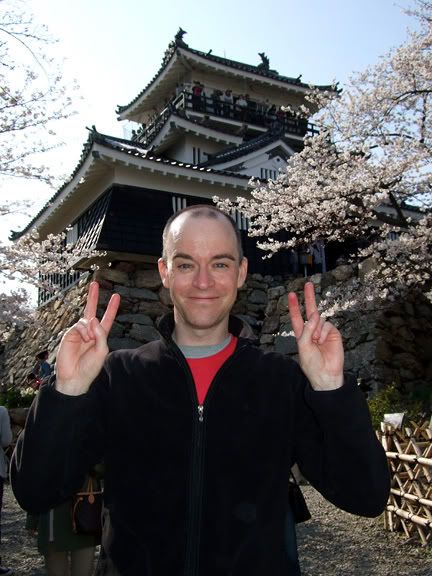 Tokugawa Ieyasu lived here. Well, he lived in the original. This is a ferro-concrete reproduction. That means it's steel and concrete. At some point some genius thought it'd be a smart idea to tear down all the castles. Only a few originals remain. Then an even smarter person decided to build replicas:
Tokugawa Ieyasu lived here. Well, he lived in the original. This is a ferro-concrete reproduction. That means it's steel and concrete. At some point some genius thought it'd be a smart idea to tear down all the castles. Only a few originals remain. Then an even smarter person decided to build replicas: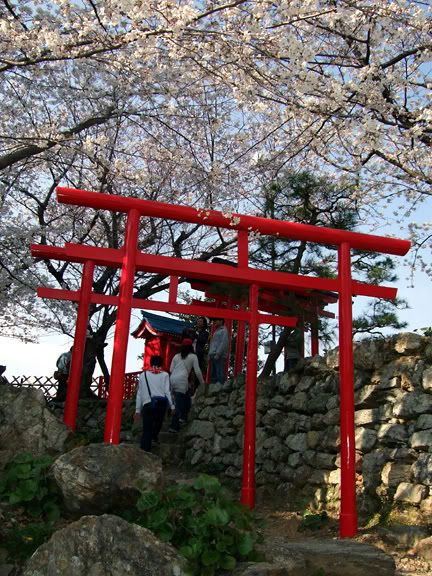 Some came to the castle park on an intense, highly personal search for natural beauty and transformative experience:
Some came to the castle park on an intense, highly personal search for natural beauty and transformative experience: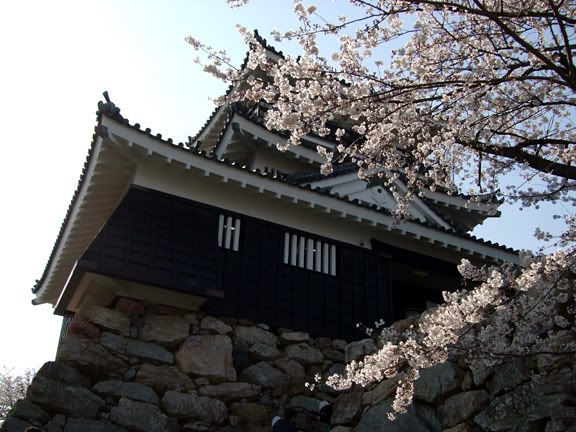 Years ago, the hill on which the castle stands was the highest point in Hamamatsu. It's been bested by various apartment buildings, hotels and the massive Act City tower, seen just over Mike's head in the background:
Years ago, the hill on which the castle stands was the highest point in Hamamatsu. It's been bested by various apartment buildings, hotels and the massive Act City tower, seen just over Mike's head in the background: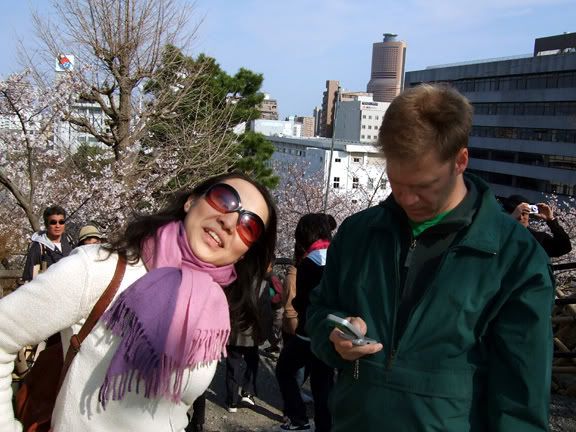 I took this photo from a terraced rise on the west side, with the sun behind me. This is a popular photography spot and we had to wait a few minutes while others snapped their pics. The guy who was next in line behind me asked me if I'd taken a beautiful photo. He asked me in Japanese and I can't remember exactly how he phrased it, but I understood. I smiled, nodded and said, "Hai, hai!"
I took this photo from a terraced rise on the west side, with the sun behind me. This is a popular photography spot and we had to wait a few minutes while others snapped their pics. The guy who was next in line behind me asked me if I'd taken a beautiful photo. He asked me in Japanese and I can't remember exactly how he phrased it, but I understood. I smiled, nodded and said, "Hai, hai!"Nice guy!
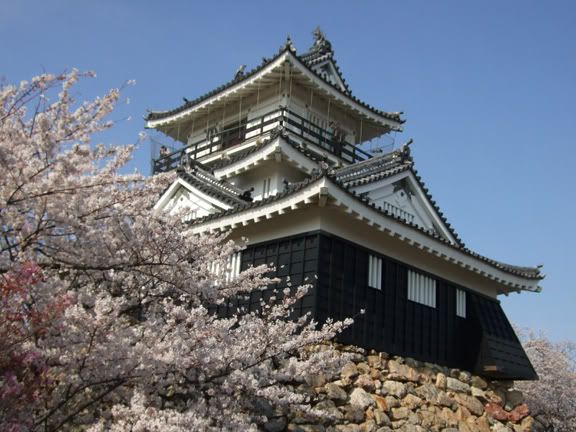 The afternoon was marred by several disputes that turned into violent altercations:
The afternoon was marred by several disputes that turned into violent altercations: But they were all quickly smoothed over in the congenial atmosphere of the crowded park. I call this photo "Japanese Gothic:"
But they were all quickly smoothed over in the congenial atmosphere of the crowded park. I call this photo "Japanese Gothic:" 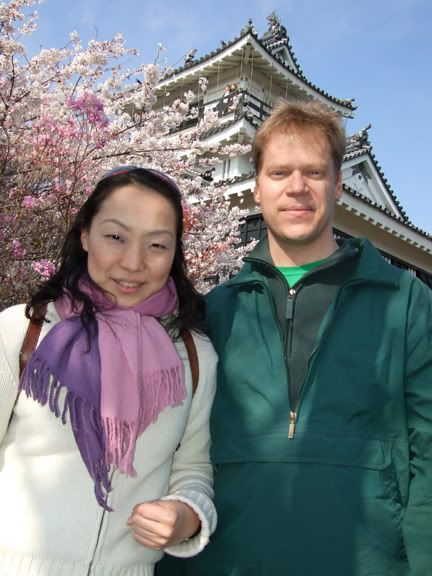 This guy!
This guy!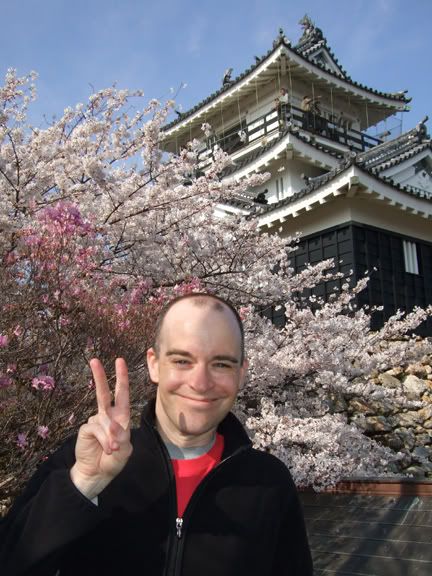 Here's the Hamamatsu War Memorial:
Here's the Hamamatsu War Memorial: Like many Japanese cities, Hamamatsu was bombed completely flat. I've met a lot of people who were children during that time so I've heard a few vivid stories of WWII's final days and the days immediately after when people barely had food to eat. I can't imagine what it's like to be witness to war, especially as a small child. I've never known a hardship or day of suffering in my life.
Like many Japanese cities, Hamamatsu was bombed completely flat. I've met a lot of people who were children during that time so I've heard a few vivid stories of WWII's final days and the days immediately after when people barely had food to eat. I can't imagine what it's like to be witness to war, especially as a small child. I've never known a hardship or day of suffering in my life. Since it's a coastal city, the U.S. Navy also shelled Hamamatsu.
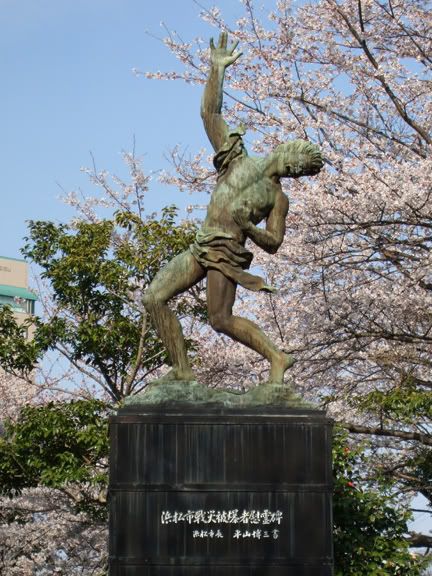 Today, it's a lovely city full of music and warm, friendly people. It's the largest city I've ever lived in, yet it's the most comfortable. A little boring at times, though. It doesn't offer the overwhelming pop culture overload and sense-stimuli Tokyo does, but then again that challenging megalopolis is close enough for a day trip.
Today, it's a lovely city full of music and warm, friendly people. It's the largest city I've ever lived in, yet it's the most comfortable. A little boring at times, though. It doesn't offer the overwhelming pop culture overload and sense-stimuli Tokyo does, but then again that challenging megalopolis is close enough for a day trip.Kana told us what these trees with their slender, drooping limbs raining white blossoms were called, but I've forgotten:
